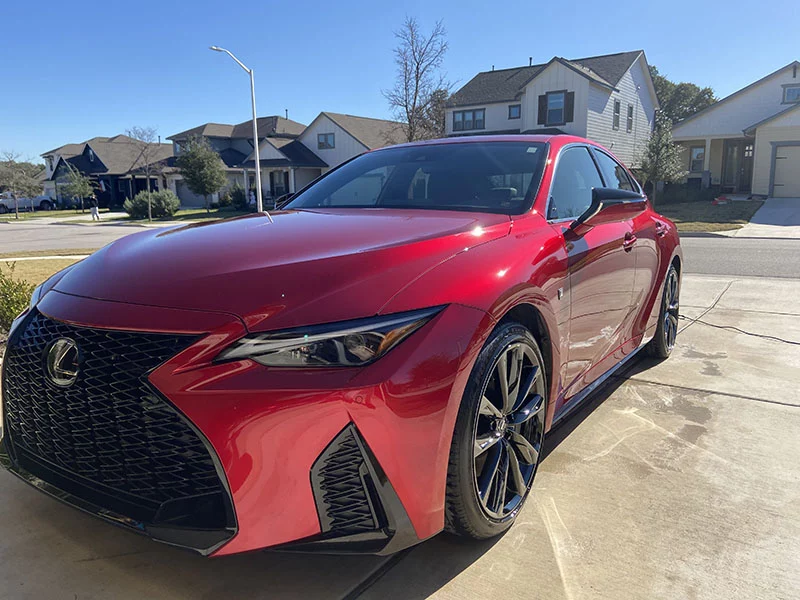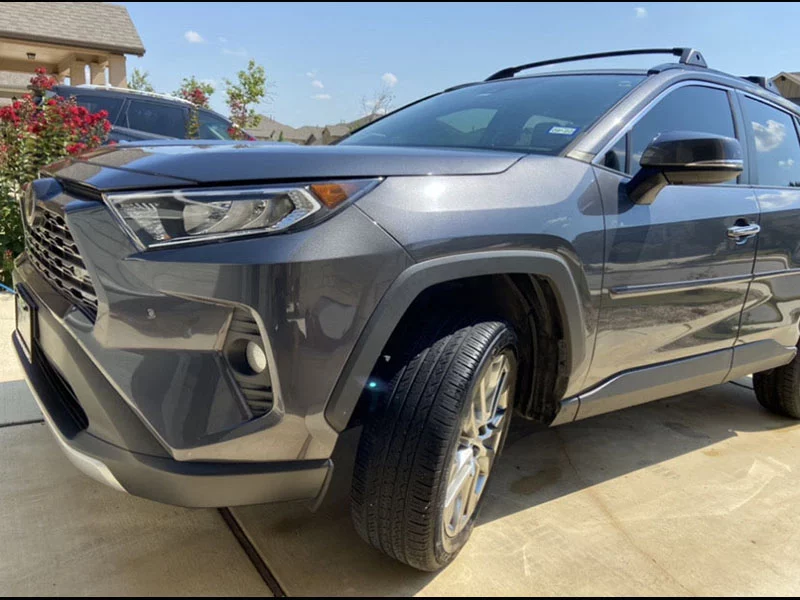Clay Bar Treatment: Achieving That Showroom Shine
Clay bar treatment is a game-changer for maintaining your vehicle’s pristine condition. This revolutionary detailing technique has gained immense popularity among car enthusiasts and professionals alike. With its ability to remove embedded contaminants and restore the smoothness of your car’s surface, a clay bar treatment has become an essential step in pursuing a showroom shine. This comprehensive guide will explore the process and benefits of clay bar treatments.
The Magic Of Clay Bar Treatment
The first section of our comprehensive guide will introduce you to the magic of clay bar treatment. Discover how this revolutionary technique can transform the appearance of your vehicle and bring it closer to a showroom shine. Explore the intricacies of clay bar treatment, including how it works, the benefits it offers, and debunking common misconceptions surrounding this powerful detailing method. Prepare to be amazed as we unveil the secrets behind the effectiveness and allure of clay bar treatment.

[brb_collection id=”1261″]
How Clay Bar Treatments Work
Clay bar treatment works by effectively removing embedded contaminants from the surface of your vehicle. Over time, your car’s exterior is exposed to various pollutants such as dirt, road grime, tree sap, industrial fallout, and even tiny metal particles. These contaminants can adhere to the paintwork, creating a rough texture and diminishing the overall shine of your vehicle.
Clay bar treatment involves using a specially formulated clay bar and a lubricant to safely and gently remove these contaminants. The clay bar is a soft, malleable material designed to glide smoothly over the surface of your vehicle. When properly lubricated, the clay bar acts as a powerful magnet, attracting and trapping contaminants within its sticky surface.
Clay Bar Treatment Steps
To perform a clay bar treatment, thoroughly wash and dry your vehicle to remove any loose dirt and debris. Next, you spray a lubricant onto a small section of the car’s surface. The lubricant acts as a barrier between the clay bar and the paint, reducing the risk of scratching.
Take a small piece of clay bar, flatten it into a pancake shape, and gently glide it across the lubricated area. The clay bar will pick up the contaminants as it moves, leaving the surface smooth and clean. It is essential to continually fold and reshape the clay bar to expose a fresh, clean surface for maximum effectiveness.
The lubricant also ensures that the clay bar moves smoothly, minimizing friction and reducing the chance of marring the paint. As you work around the vehicle, the clay bar becomes darker or discolored as it collects more contaminants. This indicates that the process is working and that you’re effectively removing impurities from the surface.
Final Steps
Once you have completed the clay bar treatment on the entire vehicle, it is essential to thoroughly rinse the car to remove any remaining lubricant and clay residue. You then dry the vehicle and assess the results of your efforts.
By eliminating embedded contaminants, clay bar treatment restores the smoothness of your vehicle’s paintwork, creating a flawless surface that enhances the overall appearance. It prepares the surface for additional detailing steps, such as polishing, waxing, or sealing, allowing those products to adhere better and provide better results.
Benefits Of Clay Bar Treatments
Clay bar treatment offers a myriad of benefits that go beyond just cleaning your vehicle’s surface. Let’s explore some of the remarkable advantages that this detailing technique provides.
1. Restores Smoothness
Over time, contaminants like dirt, pollutants, and brake dust accumulate on the surface of your vehicle, creating a rough texture. Clay bar treatment effectively removes these impurities, restoring the smoothness of the paintwork. As you run your hand over the treated surface, you’ll be amazed by the silky feel that clay bar treatment imparts.
2. Enhances Paintwork Appearance
By eliminating embedded contaminants, clay bar treatment enhances the overall appearance of your vehicle’s paintwork. The smooth and clean surface reflects light more evenly, resulting in a deeper and more vibrant shine. It’s like giving your car a breath of fresh air, reviving its original luster, and making it stand out from the crowd.
3. Prepares For Other Detailing Steps
Clay bar treatment acts as a crucial preparatory step for subsequent detailing processes. Once the surface is free of contaminants, performing tasks such as polishing, waxing, or sealing becomes easier. These products adhere better to a clean and smooth surface, maximizing their effectiveness and ensuring longer-lasting results.
4. Safely Removes Contaminates
Unlike aggressive methods that may involve harsh chemicals or abrasive compounds, clay bar treatment offers a safe and gentle way to remove contaminants from your vehicle’s surface. The clay bar itself is designed to be non-abrasive. It does not damage the paintwork when used correctly with ample lubrication. This makes it suitable for all types of vehicles, including those with delicate or custom finishes.
5. Improves Clarity
Clay bar treatment can work wonders if your vehicle’s windows or headlights have become hazy or clouded due to the accumulation of contaminants. By carefully applying the clay bar to these areas, you can remove the stubborn buildup and restore clarity, improving visibility and the overall aesthetics of your vehicle.
6. Extends Protection
Clay bar treatment cleans the surface and prepares it for further protection. Removing contaminants and creating a smooth canvas allows wax, sealants, or ceramic coatings to bond effectively. These protective products provide an additional layer of defense against environmental elements, UV rays, and even minor scratches.
7. Saves You Time And Money
Regular clay bar treatment can save you time and money in the long run. Maintaining a clean, contaminant-free surface reduces the likelihood of more severe issues, such as paint damage or corrosion. This means fewer repairs, touch-ups, or costly resprays, keeping your vehicle in top condition for years to come.
Common Misconceptions About Clay Bar Treatments
Clay bar treatment is a highly effective detailing technique, but several common misconceptions surround its use. Let’s debunk some of these myths and provide clarity on what clay bar treatment can and cannot do. We can better understand clay bar treatment’s benefits and limitations by dispelling these common misconceptions. It is a safe, accessible, and effective technique that can enhance the appearance of your vehicle when used correctly. Embrace the power of clay bar treatment and enjoy the remarkable results it can provide.
1. Clay Bar Treatment Damages The Paint
One of the most prevalent misconceptions is that clay bar treatment damages the vehicle’s paint. This is not true when the process is performed correctly. It is crucial to use ample lubrication and a gentle touch while using the clay bar. The lubricant acts as a barrier, reducing the risk of scratching or marring the paint. Clay bar treatment is safe for your vehicle’s surface when done correctly.
2. Clay Bar Treatment Removes Scratches
While clay bar treatment can improve the appearance of light surface scratches, it is not designed to remove deep scratches. The primary purpose of clay bar treatment is to eliminate embedded contaminants such as dirt, road grime, or tree sap. For more severe scratches, additional paint correction techniques may be necessary.
3. Clay Bar Treatment Requires Professional Skills
While professional detailers often perform clay bar treatments, this technique is accessible to car enthusiasts and DIY enthusiasts. With proper guidance, anyone can learn how to effectively use a clay bar and achieve remarkable results. It may take some practice to master the technique, but it is certainly within reach of the average car owner.
4. Clay Bar Treatment Is Time Consuming
Another misconception is that clay bar treatment is a time-consuming process. While it requires time and effort, it is not an excessively lengthy task. The duration depends on the vehicle’s size and the contamination level. With practice and experience, you can become more efficient in completing the treatment without sacrificing quality.
5. Clay Bar Treatment Is Only For High End Cars
Clay bar treatment is beneficial for all types of vehicles, regardless of their make, model, or value. Whether you own a high-end luxury car or a budget-friendly commuter vehicle, the contaminants that accumulate on the surface affect all vehicles equally. Clay bar treatment is a valuable step in maintaining the appearance and condition of any vehicle.
6. Clay Bar Treatment Only Needs To Be Done Once
While clay bar treatment provides immediate results, it is not a one-time solution. Contaminants continue to accumulate on your vehicle’s surface over time, especially if you frequently drive in polluted or industrial areas. Regular maintenance, including periodic clay bar treatments, ensures your vehicle maintains its smoothness and shine.
Regular Maintenance After A Clay Bar Treatment
After performing a clay bar treatment on your vehicle, it’s essential to establish a regular maintenance routine to preserve the smoothness and shine of the surface. Here are some basic steps and tips for maintaining the results of your clay bar treatment.
By following these maintenance practices, you can extend the results of your clay bar treatment and keep your vehicle looking its best for an extended period. Remember, consistency is key when it comes to preserving the smoothness, shine, and overall appearance of your vehicle’s paintwork.
1. Washing
Regular washing is crucial to remove dirt, dust, and other contaminants that can accumulate on your vehicle’s surface. Use a high-quality car wash shampoo and a soft microfiber wash mitt or sponge to gently clean the paintwork. Avoid using harsh brushes or abrasive materials that can scratch the surface. Rinse thoroughly and dry the vehicle with a clean microfiber towel to prevent water spots.
2. Avoiding Abrasive Products
Be cautious with the products you use on your vehicle after clay bar treatment. Avoid harsh detergents, abrasive cleaners, or rough brushes that can compromise the smoothness of the paintwork. Opt for gentle and pH-neutral cleaners designed specifically for automotive use. Always read the labels and follow the manufacturer’s instructions for safe and effective use.
3. Regular Waxing & Sealing
To maintain the protective layer and enhance the shine of your vehicle, consider applying a quality wax or sealant after the clay bar treatment. These products provide additional protection against UV rays, oxidation, and contaminants. Follow the manufacturer’s recommendations for application frequency and use a soft applicator pad or microfiber cloth for even coverage.
4. Quick Detailing Spray
Keep a bottle of quick detailing spray handy for quick touch-ups and maintaining the glossy appearance between washes. Quick detailing sprays are formulated to safely remove light dust, fingerprints, and water spots without a full wash. Spray the product onto a clean microfiber cloth and gently wipe the affected areas.
5. Regular Inspections
Regularly inspect the surface of your vehicle to identify any signs of contamination or imperfections. Look for bird droppings, tree sap, or other substances that can bond to the paintwork. Promptly remove such contaminants to prevent them from causing damage or staining the surface.
6. Garage or Covered Parking
Whenever possible, park your vehicle in a garage or under covered parking to shield it from direct sunlight, rain, and other environmental elements. This helps to minimize exposure to UV rays, which can cause paint fading or degradation over time. If covered parking is not available, consider using a car cover for added protection.
In conclusion, the clay bar treatment is a transformative detailing technique that brings out the true beauty of your vehicle. Removing embedded contaminants and restoring the surface’s smoothness paves the way for a stunning showroom shine.
Remember, patience and attention to detail are essential to achieving exceptional results. So, embrace the clay bar treatment, enjoy the process, and revel in the remarkable transformation of your beloved ride!
FAQs About Clay Bar Treatment
Yes, clay bars are safe to use on all types of vehicles, including cars, trucks, motorcycles, and even boats.
The frequency of clay bar treatments depends on various factors such as the level of contamination and environmental conditions. Generally, performing a clay bar treatment every six months is recommended for optimal results.
Clay bar treatment is primarily designed to remove embedded contaminants like dirt, road grime, and industrial fallout. While it may improve the appearance of light surface scratches, deeper scratches may require additional polishing or paint correction techniques.
Yes, it is highly recommended to follow up clay bar treatment with waxing or sealing the vehicle’s surface. This step enhances the shine, adds a protective layer, and prolongs the effects of the clay bar treatment.
Yes, you can reuse a clay bar multiple times until it becomes heavily soiled or loses its effectiveness. Ensure proper storage by keeping it in an airtight container or resealable bag to prevent contamination.
It is best to avoid performing clay bar treatment in direct sunlight as it can cause the lubricant to evaporate quickly, making the process more challenging. Find a shaded area or work on smaller sections at a time to achieve optimal results.

